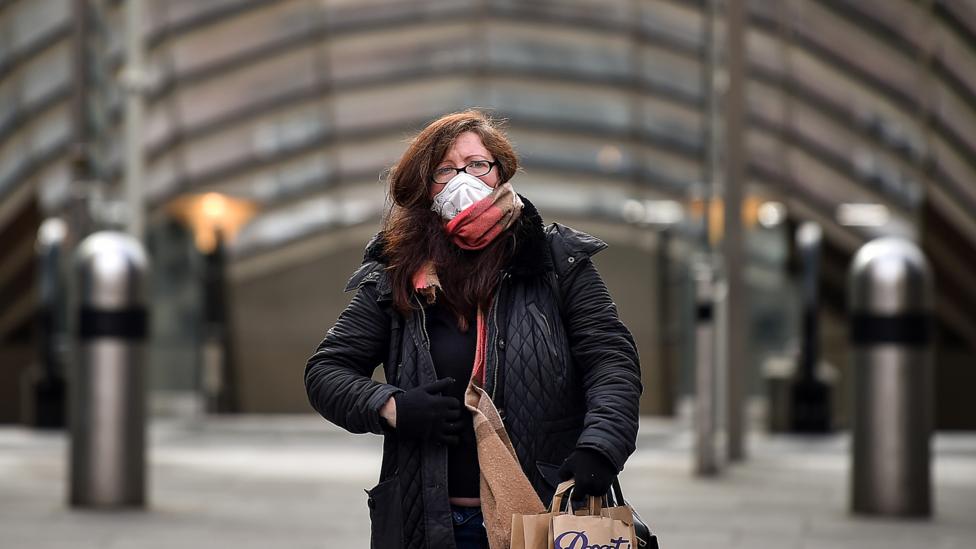Will the hot weather really eradicate the COVID-19 Coronavirus?
-By Ashfaqur Rahman Niloy
“The Coronavirus is an enveloped virus. Research showed that enveloped virus’ oily cover becomes more sensitive to heat and then easily get destroyed, that means it cannot survive for a long time. In cold conditions, the oiled plates become as hard as rubber, much like the fat in cooked meat. Because of its hardness in the cold weather, the cover plate of the enveloped virus protects it from outside of the body, which means it can survive for a long time.”
Some people expect that as the temperature rises, the outbreak of coronavirus will decrease. But globally, the infection is not behaving like a seasonal outbreak.
Many infectious diseases have occurred during this period. The flu usually comes with nausea in winter, while other diseases like typhoid occur in summer. The incidence of hum is less during the summer due to the refreshing weather, wherein tropical areas infections are more frequent during the dry season (winter).
Perhaps surprisingly, many people are now asking whether they can treat COVID-19 Coronavirus as a disease like the other seasonal diseases. Since the virus originated in China in mid-December and spread around very quickly. The number of people infected with the virus in the United States and Europe is increasing day by day.
In those areas where the weather is cold, in most cases, the virus outbreak has spread there. For this reason, it is thought that with the arrival of summer, the infection may decrease. Besides this, many experts have already warned that the virus may spread more on summer.
The COVID-19 Coronavirus’ official name is "SARS-CoV-2", which is new and changing seasonally. SARS (Severe Acute Respiratory Syndrome-SARS-CoV) was almost the same as the virus that spread very quickly in 2003. That means it has some experience with how the SARS virus infected this season. It is important to note that both SARS and MARS (Middle East respiratory syndrome coronavirus-MERS-CoV) are from the same family- Infectious coronavirus.
About 10 years ago, Kate Templeton conducted a study under the Center for Infectious Diseases at the University of Edinburgh in England, where it was found that the respiratory tract obtained by General Practitioner surgery performed at the hospital and general patient-physician during the winter season in Edinburgh. Five coronaviruses were found in the body. The probable time for these viruses to infect was from December to April. The fourth coronavirus was obtained from patients with reduced immune systems, which was quite inconsistent.
Covid-19 coronavirus has some early signals, which may change with the season. The new virus which is spreading prefers cool and dry conditions.
An unpublished observation compared the virus to the climate in the world, where infection with the Covid-19 coronavirus caused a combination of temperature, wind speed, and relative humidity. Another unpublished study suggests that high temperatures are associated with a lower incidence of Covid-19 coronavirus. But note that temperature alone can never be responsible for this global phenomenon.
Unpublished studies suspect that warm and cool temperatures are very risky for the spread of the Covid-19 corona virus, even dry areas too. Researchers say the world’s hottest regions are less vulnerable.
But since all the seasons are not over yet, the researchers rely on the computer model without the actual data of the seasons to predict what will happen in the whole year.
Some extraordinary samples show that the Covid-19 coronavirus is a seasonal local coronavirus-which means the virus is transmitted to humans it is very challenging for some time. But the way the Covid-19 coronavirus is spreading worldwide, it is not treating as a local virus as minimal. Epidemics are usually seasonal. For example, the Spanish flu usually spreads in the winter, but in summer it reaches its highest level.

“Ultimately we are not receiving the Covid-19 coronavirus locally,” said Jan Albert, a professor of viral infectious disease control at the Karolinska Institute of Stockholm. He added, “It would be even more amazing if it did not show seasonal effects. Now, the biggest question is, the susceptibility to the virus will spread to the highest levels in this season – we don’t know, but we have to think it’s possible
We must be careful when we estimate the behavior of other coronaviruses with current Covid-19 infections. But why is the Coronavirus related to the season and why is it promising to reduce the outbreak?
Coronavirus is a family of enveloped viruses. That means they are coated with oiled plates, also known as “lipid bilayer”. The virus is covered with protein and the embryos are spread around it’s like a crown prick. The nomenclature of the virus also means that, in Latin word “Corona” means “Crown”.

Research on other covered viruses (enveloped viruses, such as SARS and MERS) suggests that this oily virus becomes more sensitive to heat and then easily destroys, meaning it cannot survive for long in hot weather. In cold conditions, the oiled plates become as hard as rubber, much like the fat in cooked meat. Due to its hardness in cold it can protect the virus from outside the body, which means it can survive for a long tim in cold weather.e. Most coating viruses show strong seasonal effects.
Studies have already shown that SARS-CoV-2 can survive for up to 72 hours at 40 percent of relative humidity and a temperature of 21-23 degrees Celsius (70-73-degree F) on hard surfaces like plastic and stainless steel. How the Covid-19 coronavirus behaves at other temperatures and humidity is still being investigated. But other coronavirus studies say they can live more than 28 days at 4° C.
After the outbreak of SARS in 2003, it was reported that the virus could survive longer in dry and cold environment. For example, in dry temperatures and relative humidity, the SARS can survive on smooth surfaces for more than 5 days. The higher the temperature and humidity, the less the virus can survive.
Miguel Araujo, who is studying how climate change affects biodiversity at the Physical Sciences branch of the National Museum of Spain in Madrid, about the effects of biodiversity caused by climate change, said, “When a virus comes out of the human body, such as sneezing or coughing.” Then the climate plays an important role in giving it stability.” He added, “The longer the virus stays in the environment, the greater its ability to transmit infections and pandemics among other people. It turns out that SARS-CoV-2 is hitting the cold and dry weather zones around the world very quickly.”
His computer models seem to match the type of epidemic worldwide, where the number of infections outside the tropical region is high.

Araujo believes that if the Covid-19 coronavirus shares the same sensitivity to temperature and humidity, the coronavirus will rise to the earth at different times.
"There are two viruses that seem to share their behavior," he said. He added that, "But this is not a changing equation. The virus is spreading from person to person, if more people live together and interact with each other, then there will be more infections. The behavior of people will tell the spread of the virus. "A study conducted by the University of Maryland and found that the virus is more prevalent in cities or regions of the world where the average temperature is 3-5 degrees Celsius (8-12) degrees Fahrenheit) and relative humidity is Low.
But in the tropics, there are also enough infected humans. Researchers at Harvard Medical School have done a recent review of the outbreak of the virus in Asia, saying the coronavirus is less sensitive to the weather worldwide.
They say that the virus transmission in China’s dry and cool regions such as Xilin and Heilongjiang and in tropical regions such as Guangxi and Singapore are almost identical. Despite the effects of spring and summer temperatures and humidity in Guangxi and Singapore, it did not prevent infection. They say public health awareness is needed to control the disease.
This is because the spread of the virus depends on its ability to survive in any environment, such as the Covid-19 coronavirus, which is spreading the virus now, with seasonal changes in human consumption and the rate of infection can change.
For example, it seems that when schools are open in Europe, Hum spread more. And when the school closes, Hum spreads less. Because of the interaction, the Hum’s virus spreads more. China’s Lunar New Year’s gathering is believed to have played a major role in spreading the coronavirus to other cities and other places around the world on January 20, 2020.
The weather can also disturb our own immune system, which increases the risk of infection. There is some evidence, which says that the amount of vitamin ‘D’ in our body suggests how much we are at risk for the virus infection. During the winter, our body produces less vitamin ‘D’ than sunlight. This is because we spend more time indoors and we all wear winter clothes to protect ourselves from the cold wind. But some studies say that this theory is less likely to be responsible for seasonal changes such as flu.
What is even more controversial is whether the cold weather is weakening our immune system. Some research says that it has, but the cold is increasing the number of immune cells in our body so that our bodies immune system become strong.
There is strong evidence that humidity can have a greater impact on our risk of getting the disease. When the air is dry, we are thought to reduce the amount of mucus coating in our lungs and airways. This diluted juice provides natural protection against virus infection, and when it is low, we are more at risk for the virus.
This is because the spread of the virus depends on its ability to survive in any environment, such as the Covid-19 corona virus, which is spreading the virus now, with seasonal changes in human consumption and the rate of infection can change.
For example, it seems that when schools are open in Europe, we spread more. And when the school closes, Hum spreads less. Because of the interaction, the ham’s virus spreads more. China’s Lunar New Year’s gathering is believed to have played a major role in spreading the coronavirus to other cities and other places around the world on January 20, 2020.
An interesting study by Chinese scientists suggests that Covid-19 (corona Virus) has some connection to the weather and the weather conditions. They collected data on about 2,300 deaths in Wuhan, China, and each of them was compared with the humidity, temperature and pollution levels of the respective days.
Although it has not yet been published in academic journals, their research says that the death rate was lower on the days when humidity levels and temperatures were higher. Their study also says that the days when the temperature were highest and lowest, the death toll were even higher. But this whole work was done depending on the computer model. So, the true nature of its connection and whether it can be seen anywhere else in the world is still being explored.
Since the Covid-19 coronavirus is new worldwide, if someone is infected with the virus, it must remain isolated until it is infected by someone else.
Victoria Kolija, director of Research at the Institute for Health and Medical Research in France, says air travel is the biggest way to spread the virus worldwide. But when it starts to spread within the community, its transmission is triggered by people coming in contact with the drivers. Stopping the communication between people will also help reduce the rate of infection. At present, the governments of different countries are shutting down public places to reduce the number of transmissions.
“There is no evidence of any seasonal behavior in the Covid-19 coronavirus,” says Kalija. He added that, “Seasonal factors can play a role in this.” But he warned about whether the measures would be enough to prevent the spread of the virus. He added, “It will reduce the spread of the virus by reducing exposure of infection.”
If the number of Covid-19 coronavirus infections is really off in the coming months, there are several reasons. Resistant issues like being isolated and shutdown are the keys to success. Albert’s model says the population has a growing immune system or it can have a seasonal impact.

Albert warns that, “If there is a seasonal effect, it can cover two other actual impacts.” He added, “In those countries where the meaning of Shut down is not well known to the public, in their cases I wouldn’t be surprised to see a second stream of infections at the end of the year and in the winter.”
If the Covid-19 coronavirus shows some seasonal variability, however, according to some opinions, it is less likely to be eliminated in the summer. But in some cases, the depth review of the infection will be helpful in some cases.
Albert said, “The steps taken to level the upward line Covid-19 coronavirus outbreak are economically costly, but it will help to carry this epidemic into the summer.” He added, “If this is a seasonal event, it is important to prepare now to buy health care products.”
Today the world is shaking to prevent the spread of this virus, everyone should give some time to stop it.
Ref: bbc.com



